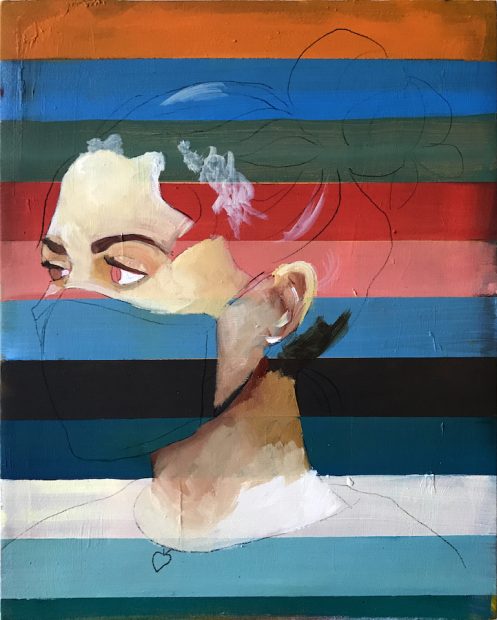If art is about transforming experiences, broadly writ, into work, then this process takes time. It can be now, later, or never. Artists respond to some experiences immediately, their work rapidly rebounding off a moment and bouncing around in the world. Others need time, and their work requires current experience to drive deep, settle within the bedrock, enmesh with the roots, and smolder. For still others, now is not a time to make things at all, but rather to tend to themselves and others, or to just pay attention and be quiet.
Many initial responses from the arts community were pandemic this and pandemic that. Insert title here. I made a few myself. This was well before we knew where we were, what this is. We still don’t fully know. Rivers of culture, politics, and commerce are being rerouted yet we have no clear visibility on it. Unless it is strongly felt or thought, or an unavoidable compulsion and flowing of images, sounds, words, and ideas, then it may suit us to be still. To wait. To ponder, fester, and broil. To pay very close attention from multiple angles, and then question the vantage points on which our angles rely.
That said, contemporaneous responses to experiences both internal and external can evoke the feeling of the moment and, in hindsight, have the benefit of reminding us what it felt like to be situated there, translated through the processes of the artist. For some, it’s not a question or an option. It is unavoidable. It may be messy quarantine inspired sketches, ephemeral experiences and objects, or networked folk art, as some have described. Whatever it is it has the value of now. But nowness can vary in its meaning and value. It can be tone deaf, myopic, or worse, just like everything else we make. Still, despite its immediacy, work created in the moment can sometimes get it exactly right.
I had an immediate reaction at the beginning of the pandemic: a four-part epic (I imagined) transmedia poem with images and live streaming elements. That was early March. It felt fresh and captured my sense of the moment — the initial disorientation, naïveté, and all. Conversely, years ago I lived through a series of disasters in Los Angeles — fires, riots, earthquakes — and was able to draw on them only recently in my creative work. They were too big, the experiences too rich and complex to transform quickly. How they fed the work and resonated with the current world were not apparent until now.
This is common: creative work that takes its time to appear. There’s an experience, a set of thoughts, images, feelings, any number of things that sit and stir, unresolved. They wait for the right moment to develop into the proper size, feeding off other experiences and prior work. Experiences are often well beyond us in scope and import, and we can only grasp little pieces of them. Sometimes these bits are like metaphors and stand in for the whole. Other times fragments connect with others to form a statement. Work that develops over time like this can feel resolved, like a grouping of complex shapes, chords, colors or textures that sit exactly as they should.
If you are driven to do work, if you are the agent and servant of the work, if artistic practice is unavoidable, then you are busy right now whether you are actively making things or not — taking it all in or letting it all out. If it’s about attention, or if attention and drive are commingled as they often are, now would be a good time to sort that out.
As we navigate this new world, elements of which will persist and unfold unpredictably into what comes next, it is worth distinguishing between the immediate work of rapid reconfiguring and the longitudinal work of deep planting. This distinction may help us frame internal and external pressures to exploit the current situation. The weight of the moment is immense and its evolving meaning largely impenetrable, yet the pressure to make is ever-present. Now is the time to question all the ordinary dynamics of pressure, their source, and to understand the varieties of creative processes within ourselves. It’s our choice, in our work, to either ignore this experience, to decorate around it, to pay close attention and absorb it for the future, or to reflect it without varnish in the now.
Dean Terry is a transmedia artist, director of Therefore art & performance group, and professor of arts and technology at UT Dallas. He is currently writing a book on creativity and technology. Twitter & Instagram: @therefore



